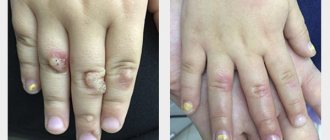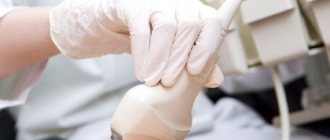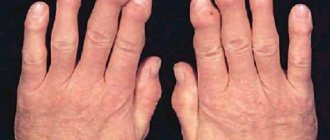Lipoma and skin atheroma are two common types of benign neoplasms. They require exceptionally attentive treatment, since in some cases (though, fortunately, not often) they can degenerate into malignant tumors. The appearance of atheroma may not cause suspicion - at first it usually does not cause much inconvenience. However, even if the tumor is not painful, you should still see a doctor. Often a lump (lipoma) on the neck or scalp gradually increases in size, in this case you need to visit a doctor urgently - the new growth will need to be examined to determine whether there is a risk of developing cancer.
Lipoma and atheroma are often similar in appearance, and patients often do not distinguish them from each other, defining them under the general name “wen.” Let's try to figure out what the difference is between a lipoma and an atheroma, and also what to do if you have one of these formations.
Symptoms, signs, diagnosis of lipoma
Before you remove a wen, you need to make sure that it is exactly that. The shape of the wen formed under the skin is round or oval. It is mobile and soft to the touch; as a rule, no pain is felt when pressing on it.
Fatty deposits located under the skin of the face, neck, back, arms and other parts of the body usually do not cause any symptoms. A lipoma formed on internal organs causes the following symptoms:
- When a lipoma appears in the esophagus, coughing, nausea, and a feeling that there is a foreign body in the throat may occur;
- Chest pain may be the cause of lipoma formation in the mammary gland;
- Symptoms such as headaches, nausea, and vomiting may occur with a lipoma in the brain.
A lipoma is diagnosed visually during a clinical examination; if this is not enough, using ultrasound, x-rays, and computed tomography.
Reasons for appearance
There are many factors that influence the formation of lipomas. Among the reasons are hereditary predisposition, impaired metabolism of fatty acids in the body, liver disease, pancreatic disease, non-compliance or violation of hygiene rules.
For a long time it was believed that soft tissue injury predisposes to the development of lipomas, but this fact was subsequently refuted in research. Thus, doctors agree that one reason that would explain all the processes has not yet been found. However, predisposition to gastrointestinal lipomas has a proven connection with a gene mutation on chromosome 12. In other cases, the reasons remain unknown.
Treatment of wen
Despite the fact that a wen under the skin usually does not cause any inconvenience, many people are interested in how to remove a lipoma . First of all, you should consult a doctor, especially in cases where inflammation of the wen has occurred. Those who are wondering how to squeeze out a wen should know that you should never do this yourself.
Removing wen at home can not only provoke infection into the wound, but also leave unsightly atrophic scars. However, in addition to the medical procedures that a doctor can offer, there are also traditional medicine and pharmaceutical preparations that will help cope with this problem.
FIBROHISTIOCYTIC TUMORS AND TUMOR-LIKE LESIONS
Xanthoma
A rare disease, most often localized in the skin. Occurs in people with impaired lipid metabolism, usually multiple. Also localized in tendons. Presented by small nodules, partly of the xanthelasma type.
Juvenile xanthogranuloma
A small nodule in the dermis or subcutaneous tissue. Disappears spontaneously.
Fibrous histiocytoma
It is more common in middle age and is localized mainly on the lower extremities. Usually has the shape of a dense knot up to 10 cm, grows slowly. After surgical removal, recurrences are rare.
How to remove wen using traditional methods
If it is not possible to visit a doctor’s office, you can try to remove the lipoma yourself. But this applies only to those formations that have appeared recently. If the lipoma is old, it needs to be treated only surgically.
Baked onion
Onions are considered one of the most effective means for removing wen. Do the procedure at least 2 times a day.
- Take one medium onion and bake in the oven.
- Grind the cooled onion using a meat grinder.
- Grate baby soap, add to onion and mix thoroughly.
- Apply the resulting mass as a compress to the wen.
Sour cream with honey
Before the procedure, you need to take a hot bath to steam the wen. Then the components of the prepared remedy for wen will better penetrate the adipose tissue of the tumor. Carry out the procedure every other day.
- Mix equal amounts of sour cream, honey and sea salt.
- Apply the resulting mixture to the problem area.
- After 20 minutes, rinse with warm water.
Atheroma
The origin of atheroma is fundamentally different from lipomas. Atheroma develops from the sebaceous glands of the skin. For various reasons, the gland duct becomes clogged, secretion accumulates in the gland, which gradually begins to increase in size. Atheroma is defined as a small (from 0.5 to 2 - 3 cm) formation, which always rises somewhat above the skin and is always fused to it (i.e. the skin above the atheroma does not move), and can grow slowly. Atheroma always has a capsule and contains atheromatous masses resembling crushed lard.
Because The atheroma is connected to the external environment by a duct; there is always a threat that it will become infected through the duct and suppuration will occur. In this situation, moderate pain appears in the area of the previously “quiet” atheroma, the formation quickly (over several days) increases in size, redness appears around it, and body temperature may rise. Suppuration of atheroma requires urgent surgery.
Treatment of lipomas with pharmaceutical products
Those who prefer to use pharmaceutical drugs should purchase Vishnevsky ointment. This product should be applied to an adhesive plaster and attached to the affected area, after 2 days the plaster should be replaced with a new one.
You can also use hydrogen peroxide. This drug should be regularly lubricated. After a few days, the skin on the affected area will burst and the contents of the wen will leak out.
lipoma treatment
BENIGN TUMORS OF ADIPOSE TISSUE
Lipoma
One of the most common benign tumors (30-40%). It can occur anywhere there is fatty tissue. When localized in the dermis, it is usually encapsulated, in other parts of the body it is poorly demarcated. Tumors localized in the retroperitoneal space can become malignant; other localizations practically do not become malignant. Lipomas are often multiple and sometimes develop symmetrically. Their growth is not related to the general condition of the body. The tumor has the shape of a lobular node. With long-term existence in the lipoma, dystrophic changes, calcification, and ossification can develop.
There are numerous variants of mature fatty tumors, which differ from the classic lipoma both in clinical manifestations and in some morphological features.
Myelolipoma
A rare tumor, most often found in the retroperitoneum, pelvic tissue, and adrenal glands. Does not become malignant.
Subcutaneous angiolipoma
Numerous painful nodes. It occurs more often in young men on the front wall of the abdomen, on the forearm.
Spindle cell lipoma
It is observed more often in adult men (90%). The node is round in shape, dense, slowly growing, most often localized in the area of the shoulder joint and back. Recurrence and metastasis after excision have not been described, despite the fact that the tumor can infiltrate surrounding tissues.
In chondro- and osteolipomas, metaplastic areas of bone and cartilage tissue are detected.
Benign lipoblastomatosis
It is divided into nodular (kind lipoblastoma) and diffuse (kind lipoblastomatosis) forms. Boys under 7 years of age (88%) get sick more often. The tumor is localized on the lower limb, in the buttocks and on the upper limb - the shoulder girdle and hand. Lesions of the neck, mediastinum, and trunk have also been described. The tumor node is encapsulated, lobulated, spherical in shape, and can reach 14 cm. After surgical treatment, relapses are possible, sometimes repeated. Metastases have not been described.
Gebernoma (fetal lipoma)
Lipoma from lipoblasts, pseudolipoma is an extremely rare tumor, localized in places where there is brown fat (neck, axillary region, sinus, mediastinum). Presented as a lobular node, usually small in size. Does not recur and does not metastasize.
How a doctor can help you remove a wen
It is highly advisable that lipoma removal be performed by an experienced specialist. After a thorough examination, a dermatologist may prescribe the following procedures to remove wen:
- Mechanical cleaning. This method is considered the simplest. The procedure is carried out by piercing the wen with a needle, after which all its contents are removed. Sometimes the procedure is performed under local anesthesia.
- Removal of lipoma with laser . Laser therapy is considered the most progressive method for removing fatty tissue. The procedure is very quick and does not leave scars. In addition, the possibility of the wen reappearing in the same place is excluded.
Preparation for the procedure
In case of subcutaneous lipoma removal, no special preparation is required. The mini-surgery is performed on an outpatient basis, meaning it does not require hospitalization. The surgeon performs all necessary manipulations under local anesthesia. Thus, the procedure is painless for the patient.
Giant subcutaneous lipomas, as well as neoplasms of the intestines, internal organs, and peritoneum require more serious and thorough preparation. Operations of this type are carried out with hospitalization of the patient. Before the intervention, samples are taken and, if necessary, additional studies are done. Operations performed under general anesthesia require restriction of water and food on the eve of the operation.
Prevention of lipoma
After lipoma removal, the following preventive measures must be observed:
- reduce the consumption of fatty meats and high-fat dairy products;
- introduce vegetable oil and fish into the daily menu;
- refuse late dinners;
- move as much as possible.
You need to follow these recommendations not only if a lipoma has already appeared, but also if there is a hereditary predisposition. Doctors say that the risk group for the formation of wen includes middle-aged and elderly people.
By structure
Lipomas according to these characteristics are divided into:
- Classic (there is only fatty tissue inside);
- Angiolipomas (have vessels inside);
- Hibernomas (in the fiber there are formations similar to the formations of hibernating animals);
- Myelolipomas (hematopoietic and adipose tissue are located together);
- Myxolipomas (contain mucous tissue elements inside);
- Myolipomas (muscle fibers are found together with fatty tissue);
- Fibrolipomas (there is connective and fatty tissue inside).
The examination and removal will be carried out by the country's leading dermatologists
They were trained abroad and have already examined more than 50,000 patients
Ladygina Evgenia Igorevna
Dermatologist
Specialty: Has the specialties of dermatologist and dermatovenerologist.
Work experience: 3 years
Education: In 2021, she graduated from V. N. Karazin Kharkov National University.
Treatment of diseases: Dermatoscopy. Diagnosis of skin neoplasms. Laser removal of moles, warts, condylomas and papillomas. Elimination of tattoos, age spots.
Belskaya Elena Alexandrovna
Chief physician. Dermatologist
Specialty: General Medicine.
Work experience: 17 years.
Education: Kharkov State Medical University 2003
Treatment of diseases: Treats chronic skin diseases: psoriasis, atopic dermatitis, eczema. Fights skin infections - pyoderma, fungal diseases. Removes tattoos. Detects and treats skin tumors: warts, condylomas, hemangiomas, moles.
Krasiy Irina Nikolaevna
Dermatologist of the first category.
Specialty: General Medicine.
Work experience: 17 years.
Education: Kharkov State Medical University 2003
Treatment of diseases: Diagnosis, treatment and removal of skin tumors (warts, papillomas, condylomas, moles, molluscum contagiosum, hemangiomas, spider veins, pigmentation), treatment of chronic skin diseases (psoriasis, eczema, atopic dermatitis), skin infections (pyoderma, fungal diseases ), removal of tattoos, permanent makeup.
Bidnichenko Natalya Levonovna
Dermatologist of the highest category
Specialty: Dermatology.
Work experience: 15 years.
Education: Odessa State Medical University 2003
Treatment of diseases: Treats skin diseases - psoriasis, dermatitis and eczema. Helps get rid of pyoderma and other skin infections. Identifies dangerous tumors and removes them. Checks papillomas, moles, hemangiomas, keratomas, fibromas, condylomas, vascular cobwebs.
Biyukova-Polshakova Irina Lazarevna
Dermatologist of the second category
Specialty: Dermatology, trichology, clinical psychology.
Work experience: 11 years.
Education: Bukovinian Medical University 2007 Odessa National Medical University 2012
Treatment of diseases: Specializes in the elimination of psoriasis, eczema and dermatitis. Diagnoses and treats skin infections such as pyoderma. Identifies dangerous tumors and selects methods for their removal.
Make an appointment with a dermatologist
- Share
- Share
Complications
A complication of a lipoma should be considered torsion of the leg and disruption of the blood supply to the neoplasm, if we are talking about a lipoma on the leg. In this case, the node may undergo necrosis or ulcerate, which is accompanied by severe intoxication syndrome and can be life-threatening, so the tumor in this case must be immediately removed.
Another complication of lipoma should be considered its malignancy. Therefore, when active growth of the tumor begins, it is necessary to remove the tumor as quickly as possible and perform a tissue biopsy.









